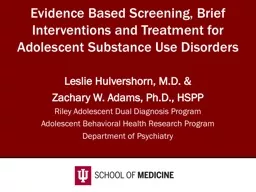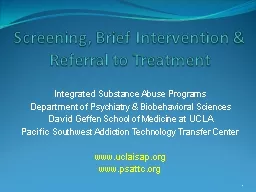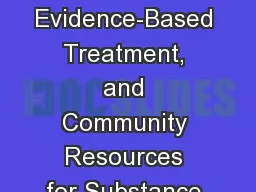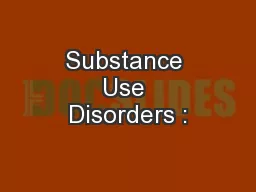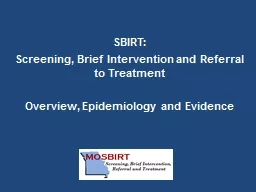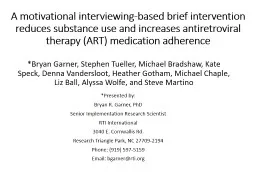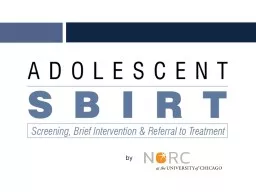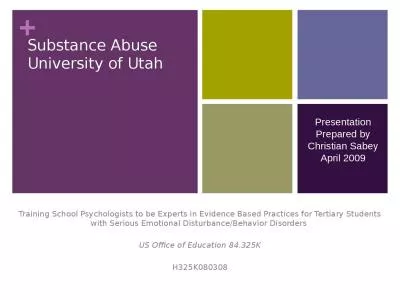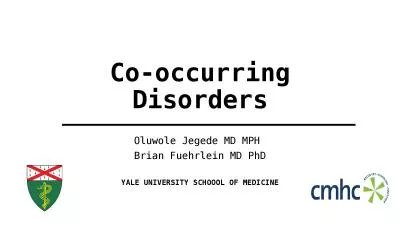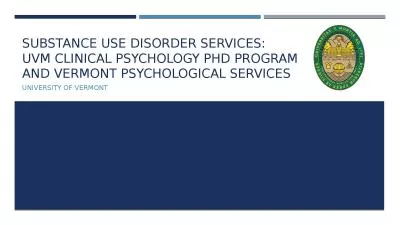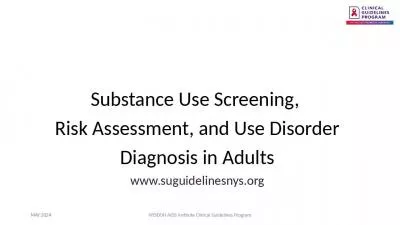PPT-Evidence Based Screening, Brief Interventions and Treatment for Adolescent Substance Use
Author : uoutfeature | Published Date : 2020-06-16
Leslie Hulvershorn MD amp Zachary W Adams PhD HSPP Riley Adolescent Dual Diagnosis Program Adolescent Behavioral Health Research Program Department of Psychiatry
Presentation Embed Code
Download Presentation
Download Presentation The PPT/PDF document "Evidence Based Screening, Brief Interven..." is the property of its rightful owner. Permission is granted to download and print the materials on this website for personal, non-commercial use only, and to display it on your personal computer provided you do not modify the materials and that you retain all copyright notices contained in the materials. By downloading content from our website, you accept the terms of this agreement.
Evidence Based Screening, Brief Interventions and Treatment for Adolescent Substance Use: Transcript
Download Rules Of Document
"Evidence Based Screening, Brief Interventions and Treatment for Adolescent Substance Use"The content belongs to its owner. You may download and print it for personal use, without modification, and keep all copyright notices. By downloading, you agree to these terms.
Related Documents

